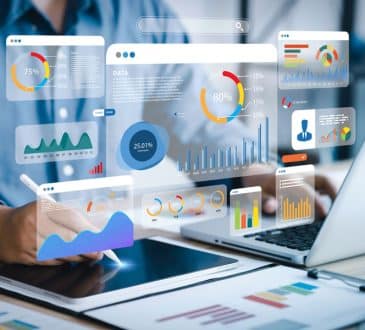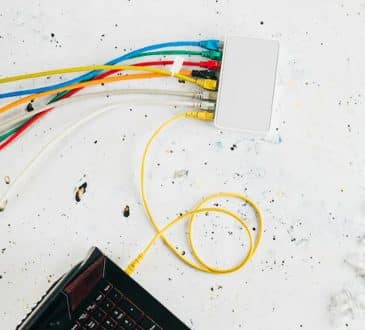Getting to a New Normal as Businesses Restart/Revitalize

We are living in a crazy time. Many organizations are likely to cease to exist. In some instances this is due to their particular line of business and the COVID19 pandemic (e.g., restaurants, beauty care…), but other organizations will cease to exist or become much smaller due to choices made by the leadership team.
It is definitely a challenging period. As businesses begin to reopen and revive what are some actions and choices that might increase your chances of future success?
Get the basics right:
- Social distancing will be a factor moving forward. Even after a vaccine is discovered it will not eliminate the problem. Most flu vaccines are only good for one year and there are constantly evolving flu varieties. One can expect something similar from the corona virus family.
- What will your standard work protocols be moving forward? Standard work is the best way we know how to do an activity. It can range from project management to repetitive task like assembly work or call center activities. Engage your employees in defining your new protocols. Realize there will be a period of experimentation.
- What will your protocols be when someone comes down with the virus? How will you investigate prior contact interaction with infected individual? How will you ready your workplace for resumption of work activities?
- Standard practices throughout the workday will need to be examined. Will you need to spread the work over multiple shifts in order to have safe spacing of employees? Consider your physical location for other non-task elements of the workday? For example, do you need new protocols like split breaks and lunches to reduce congestion in cafeteria and break areas? Should you reduce the number of chairs in these areas to naturally encourage social distancing?
- What are your most important decisions? List decisions that need to be made and determine your key priorities where effective execution is very important.
Carefully consider your communications strategy so that you can effectively reach everyone in your business from the front office to the shop floor. What methods can you use to ensure everyone gets the same message and is reminded about good practices to avoid infectious diseases. Use multiple methods to ensure the most effective dissemination of your messages: daily huddles, emails, town halls, newsletters and posters, for example. Consider your workforce’s languages as well. Do you need to translate information, or can you use iconography, pictures, charts and numbers to reach workers who speak different languages? At Seattle’s Port and Airport facilities the CEO communicates daily via email and zoom messages to all employees.
Now is a good time to look at your traditional improvement practices – the way the organization goes about the business of improvement. The magnitude of improvement opportunity in most organizations is much bigger than people realize. What do you need to do to increase throughput and or productivity by 50% or more? What are the obstacles that inhibit accomplishing that level of performance improvement?
Consider using something like AME’s Lean Sensei™ to assess your current level of improvement maturity. These levels of improvement are indeed possible, you first need to believe you can, then trust the lessons and outcomes many other companies have also had using the Lean Sensei as their guide and their barometer to complement their internal assessment practices Improvement is not just an operational issue. It includes the way you sell your product, the way new products are developed, the improvement impact from the adoption of new technologies and the way support departments interface with the value adding segments of your organization. All too often leaders assume they are doing the right thing. Be sure to include in your improvement opportunity assessment a look at the way leaders, lead.
Traditional business practices are going to be challenged. During the pandemic organizations are increasingly using digital technologies for communication and they are learning that much work can be effectively completed off site. Many manufacturing companies that were deemed essential during the pandemic have learned that their hourly workforce can get their work done with considerably less supervision. What can be done moving forward to change the way you manage people? No longer does there need to be a manager who has all the information and shares it with the team. It is now possible for the team to access all the pertinent information. If they’re trained in problem solving and basic accounting, the team can self-manage and succeed!
Adopt the mindset that everything you do is an experiment in the best-known way to do something at this moment, but there are always ways to improve upon it. Taiichi Ohno once said, “Assume everything is a mess!” Constantly assess the effectiveness of your current practices and experiment for new possibilities. Maintain an awareness of what is happening with those experiments, don’t let learning get lost. A simple example: how do you more permanently embrace many of the best practices discovered during recent work from home mandates?
It’s highly likely that whatever you were selling prior to the pandemic is going to ramp up slowly, unless you were one of the handful of businesses that experienced the opposite problem where they needed to immediately handle significantly higher levels of business transactions. So what are your plans for moving forward? What are the core products or services you provide? How can you stop doing activities that do not add real value to your business? This isn’t just a simple financial analysis. Look at your value proposition to your key customers. What do you need to keep doing? What can you stop doing? What should you start doing? Take advantage of this unique opportunity to revisit your business activities, perhaps redefining your value proposition to/for your customer base.
There is likely to be an innovation explosion over the next two years. There is already an abundance of companies using 3D Printing to create and market new products. OC Tanner, an employee recognition product/service company in Utah designed and is manufacturing connections for healthcare worker’s PAPR masks. A company in the San Francisco area redesigned swabs for use in hospital coronavirus testing. These are just two examples of the super early wave of innovative practices spurred by the pandemic. Take a look at needs in the marketplace. Many companies are going to change their supply chains.
What opportunities exist for new markets, new customers. So many organizations are making their own equipment to create new products, something that was a common practice many years ago and a capability lost in many Western businesses. The whole idea of experimentation to try new things as we figure what we need to do to survive is going to change the mental models and I believe make more leaders receptive to trying new things. Create an organizational environment that is more open and more receptive to trying something new.
Really think through your supply chain strategy. Focus heavily on tracking and guiding recovery of your current state supply base. It will be a rocky recovery for many of them and potentially disruptive to the flow of customer value in your operations. This global pandemic has exposed serious risk areas such as:
- Widely dispersed and fragmented supply chains
- Single or sole sourced supplier partners
- Supplier partners where one you are a small part of their buy and not preferred
- Supplier partners concentrated in one geographic area subject to major disruption
- Supply chains concentrated in areas subject to government interference and poltical regulation shifts
- Distant supply chains that drive bloated inventories, significant goods in transit and long and expensive freight recovery replenishment costs during supply constraint periods
Don’t make the mistake of throwing out lean strategies during this transition time. Now is the time to double down on lean thinking and methods, not abandon them. For example, the knee jerk reaction to disruptions in supply chains could be to establish policies and plans to hold lots more inventory. Or perhaps someone will suggest it makes sense to have long runs and large batches that are pushed onto the next process instead of continuing to produce small batches that are pulled through your processes.
Hire new talent. There is an abundance of talent that was not available two months ago that are now available for hire. What companies in your area have laid off people? Contact them to find out who some of the people are that they really did not want to let go. So many new start-ups will have gone out of business. Contact the business incubators in your geographic area. Which of their entrepreneurs went out of business? Hire some of these people and perhaps pick up some of their innovative ideas.
The digital revolution has arrived. In the past changes were sometimes resisted by employees and sometimes leaders were hesitant to adopt them. How can new technologies accelerate your improvement endeavors? However, don’t just buy a technology for the sake of it. Have a business use for it. Use these readily available technologies to improve your current business practices and to find new growth opportunities in existing markets and with new customers.
The good news – if there is any in this pandemics – is that in most cases your competitors are being affected in the same ways you are. Do not overly focus on the negative aspects of this situation; Instill a positive, can do, spirit and use this recovery period as an opportunity to leapfrog what others are doing.
In a “Tale of Two Cities” Charles Dickens wrote, “it was the best of times, it was the worst of times.” That statement applies to our world today. This is a challenging environment. But it is also rife with new opportunities for organizations savvy enough to seize the day.
Please stay safe, but don’t go into hiding. Take advantage of this opportunity to restart your organization. You don’t need a new greenfield site. You can do your own new greenfield right where you are operating today.
Written by Michael Bremer. Have you read?
# Best countries in the world for a child to be born in, 2020
# Best Fashion Schools In The World For 2020
# Best Hospitality And Hotel Management Schools In The World For 2020
# World’s Best Cities For Expats, 2020
# World’s Best Cities For Remote Working Jobs For 2020
Add CEOWORLD magazine to your Google News feed.
Follow CEOWORLD magazine headlines on: Google News, LinkedIn, Twitter, and Facebook.
This report/news/ranking/statistics has been prepared only for general guidance on matters of interest and does not constitute professional advice. You should not act upon the information contained in this publication without obtaining specific professional advice. No representation or warranty (express or implied) is given as to the accuracy or completeness of the information contained in this publication, and, to the extent permitted by law, CEOWORLD magazine does not accept or assume any liability, responsibility or duty of care for any consequences of you or anyone else acting, or refraining to act, in reliance on the information contained in this publication or for any decision based on it.
Copyright 2024 The CEOWORLD magazine. All rights reserved. This material (and any extract from it) must not be copied, redistributed or placed on any website, without CEOWORLD magazine' prior written consent. For media queries, please contact: info@ceoworld.biz
SUBSCRIBE NEWSLETTER








